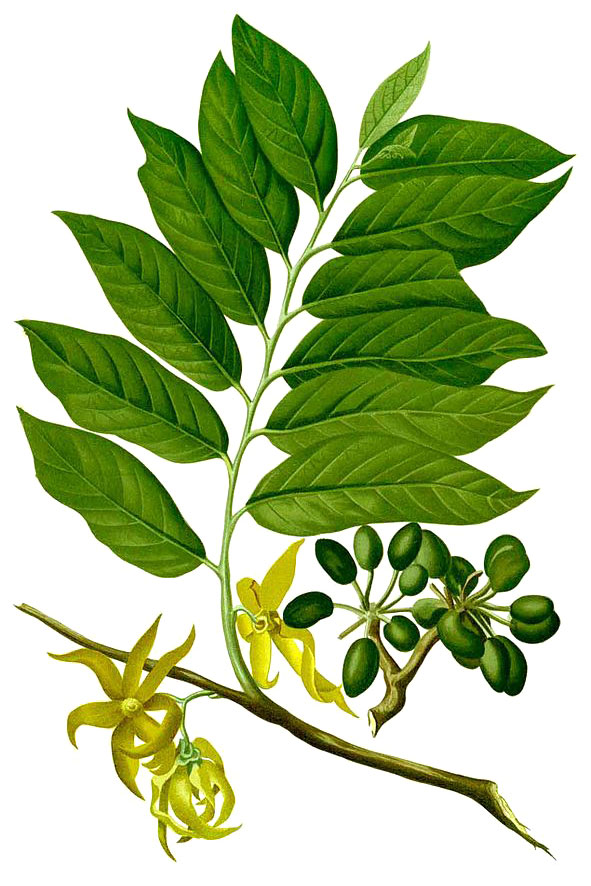Ylang-Ylang

Origin: Tropical Asia and Queensland (Australia)
Family: Annonaceae
Scientific Name: Cananga odorata
Folk Names: Cananga tree, perfume tree, flower of flowers
Traditional Names: Kenanga (Indonesian), Kradangnga (Thai), Ilang-ilang (Filipino), Mata‘oi (Cook Islands), Mohokoi (Tonga), Moso‘oi (Samoa), Moto‘oi (Hawaii), and Mokosoi, Mokasoi or Mokohoi (Fiji)
Magical
Element: Water
Day: Friday
Planet: Venus
Zodiac: Taurus
Parts Used: Flowers
Magical Properties: Love, lust, peace
Substitutions: Jasmine
Lore
Traditional Uses:
- Indonesia: Ylang-ylang flowers are spread on the bed of newly-wed couples to ensure a sweet first night.
- Philippines: Strung into a lei with Sampaguita (Jasminum sambac, Sambac jasmine) and worn by women and used to adorn religious images.
Aromatherapy
Part Used: Flowers
Extraction Method: Steam or water distillation
Flash Point: 86°C
Scent Type: Floral
Perfume Note: Middle/base
Scent Description:
Aromatherapeutic Uses
Helpful for anxiety, tension, shock, fear, panic, insomnia, depression, and stress.
Reputed to be an aphrodisiac.
Warnings:
- Not safe for use for folks with low blood pressure.
- Can be sensitising.
Botanical
Fast-growing tree in the custard apple (Annonaceae) family.
Type: Evergreen tree
Plant size: 12m
Leaves: Smooth, glossy ,13–21 cm long, oval-shaped with pointed ends
Flowers: Long-stalked, drooping greenish-yellow star-shaped flowers with 6 long/narrow petals
Etymology: From the Tagalog name “ilang-ilang”, which comes from the word ilang (wilderness) which refers to the trees natural habitat.
